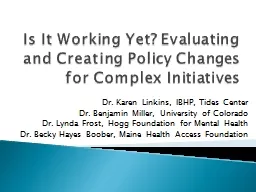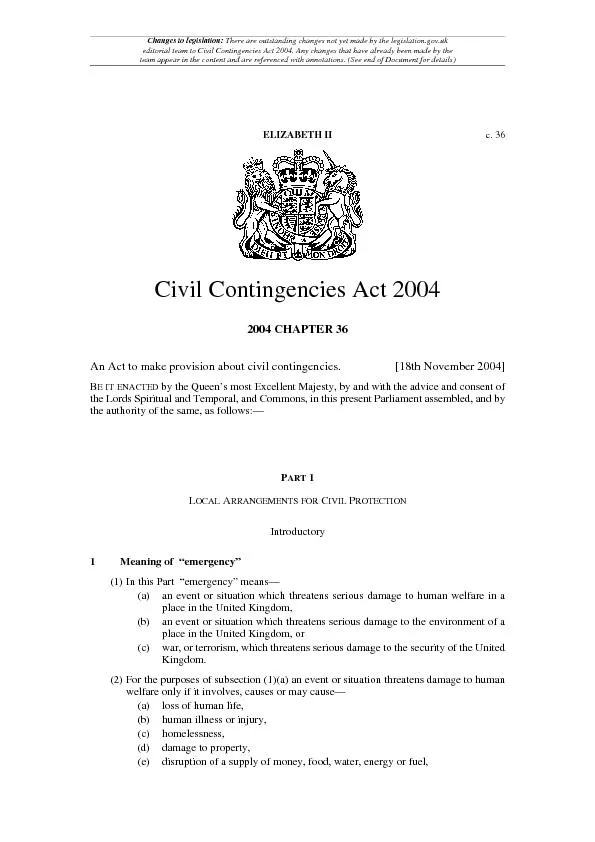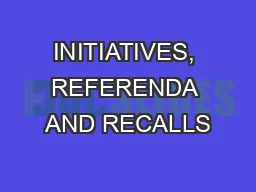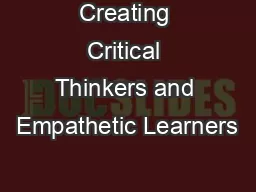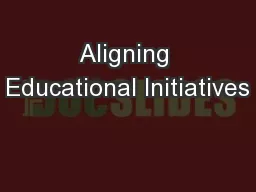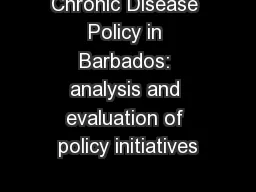PPT-Is It Working Yet? Evaluating and Creating Policy Changes for Complex Initiatives
Author : tatyana-admore | Published Date : 2018-11-03
Dr Karen Linkins IBHP Tides Center Dr Benjamin Miller University of Colorado Dr Lynda Frost Hogg Foundation for Mental Health Dr Becky Hayes Boober Maine Health
Presentation Embed Code
Download Presentation
Download Presentation The PPT/PDF document "Is It Working Yet? Evaluating and Creati..." is the property of its rightful owner. Permission is granted to download and print the materials on this website for personal, non-commercial use only, and to display it on your personal computer provided you do not modify the materials and that you retain all copyright notices contained in the materials. By downloading content from our website, you accept the terms of this agreement.
Is It Working Yet? Evaluating and Creating Policy Changes for Complex Initiatives: Transcript
Download Rules Of Document
"Is It Working Yet? Evaluating and Creating Policy Changes for Complex Initiatives"The content belongs to its owner. You may download and print it for personal use, without modification, and keep all copyright notices. By downloading, you agree to these terms.
Related Documents

